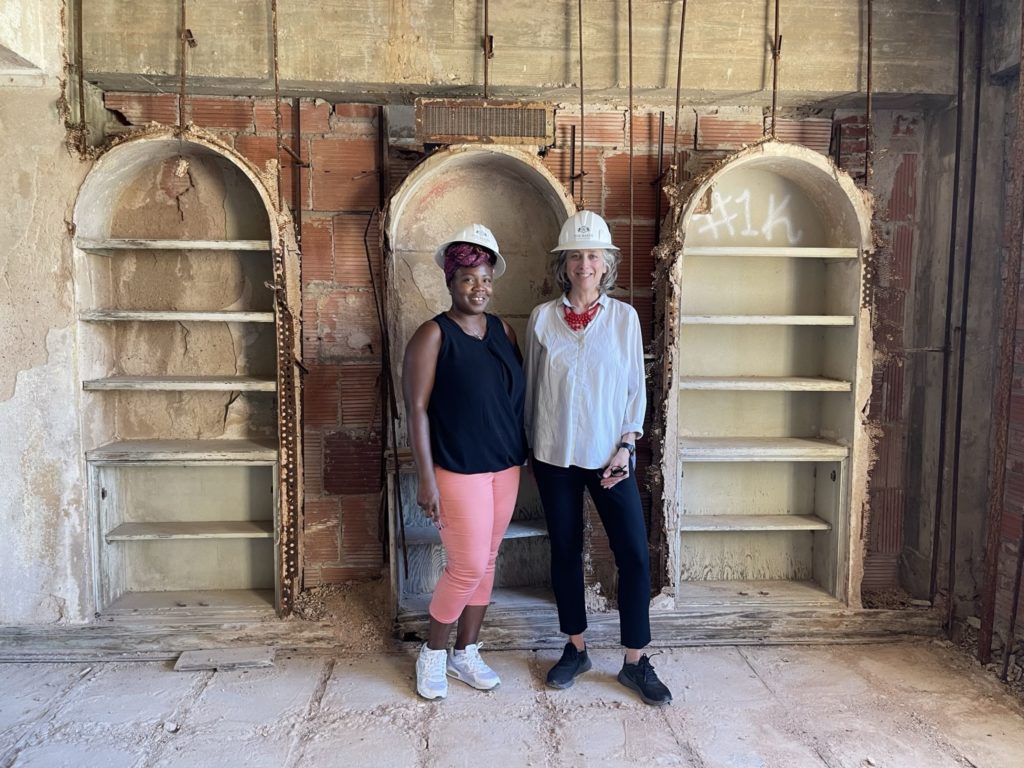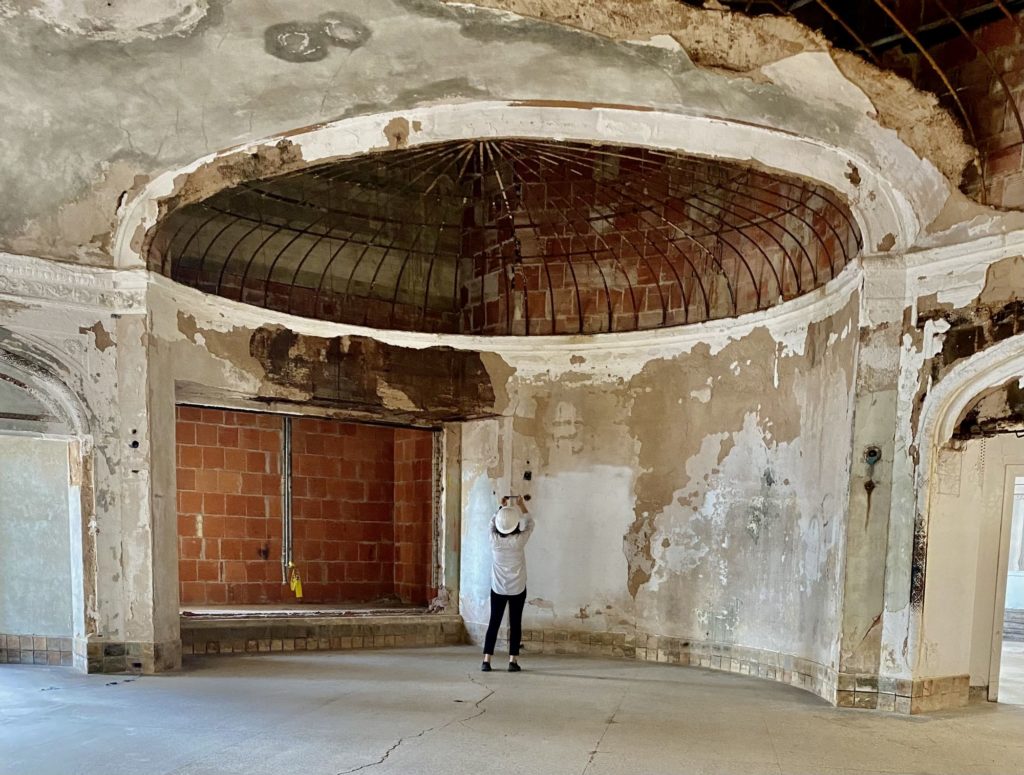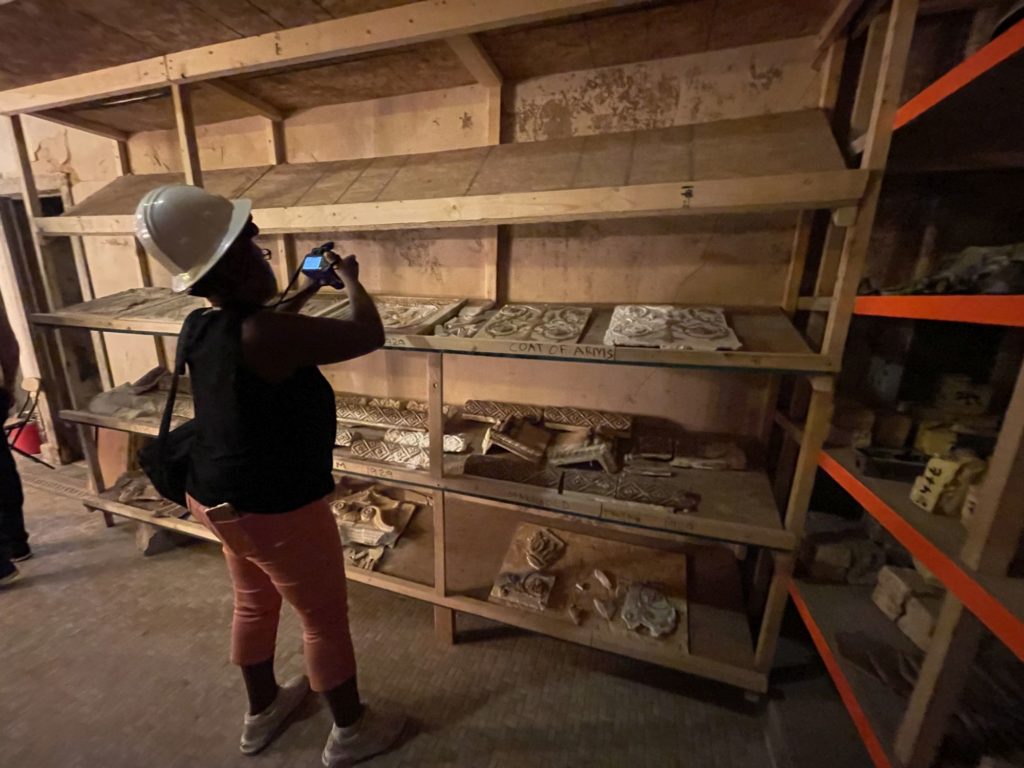By Paula Lupkin, October 2022
In September, Tara Dudley (HIG Advisory Board) and I had a very “HIG” experience together in Mineral Wells, Texas. We went there as part of our service to the State Board of Review for the Texas State Historical Committee, advising on Texas proposals submitted to the National Register of Historic Places. Typically, the Board tours a local, recently designated building when we meet. This time we got to explore the fabulous 1929 Baker Hotel, currently undergoing renovation as a luxury hotel and spa. The chief contractor guided us through a building that had been stripped of its finishes and fittings, from the basement where all the original toilets and the chandeliers from the lobby are meticulously stored, to the owner’s suite ten stories above, and then to the unventilated, segregated room designated as a dormitory for African-American staff.

The building’s interior was exposed in a way that was never intended to be seen and it revealed so much. Exposed conduits, layers of paint and paneling, and rows upon rows of stored standardized room furnishings, including more than eight hundred doors, brought attention to the concept of the interior in the most visceral way. The reinforced concrete shell of the building, the infrastructure, the decoration, and the furniture were dislocated and ghostly; a palpable reminder of the processes and definitions of interiors. We moved slowly through the building, photographing everything, and pointing things out to each other with the enthusiasm of true interiors nerds.

It was great to share that enthusiasm with her, and I wished all of HIG could have been there as well. Building community and providing shared opportunities for learning and teaching is one of our primary missions. Making more opportunities for fieldwork and fellowship like this one available to our membership will be one of my primary goals this year.


